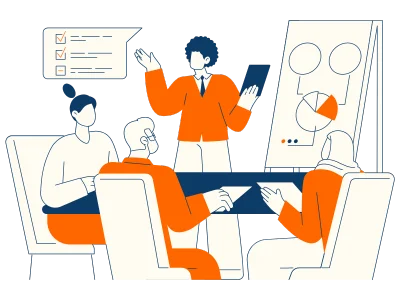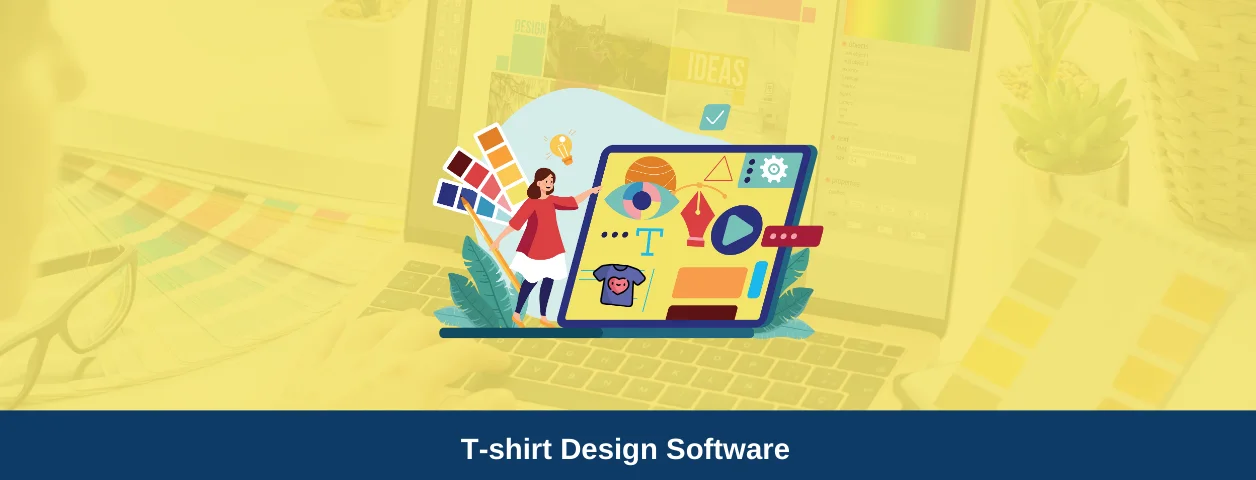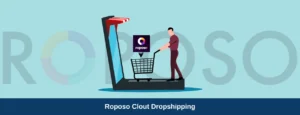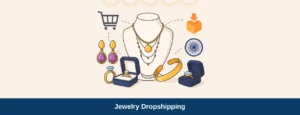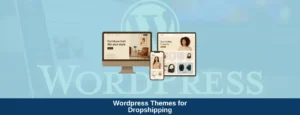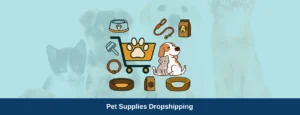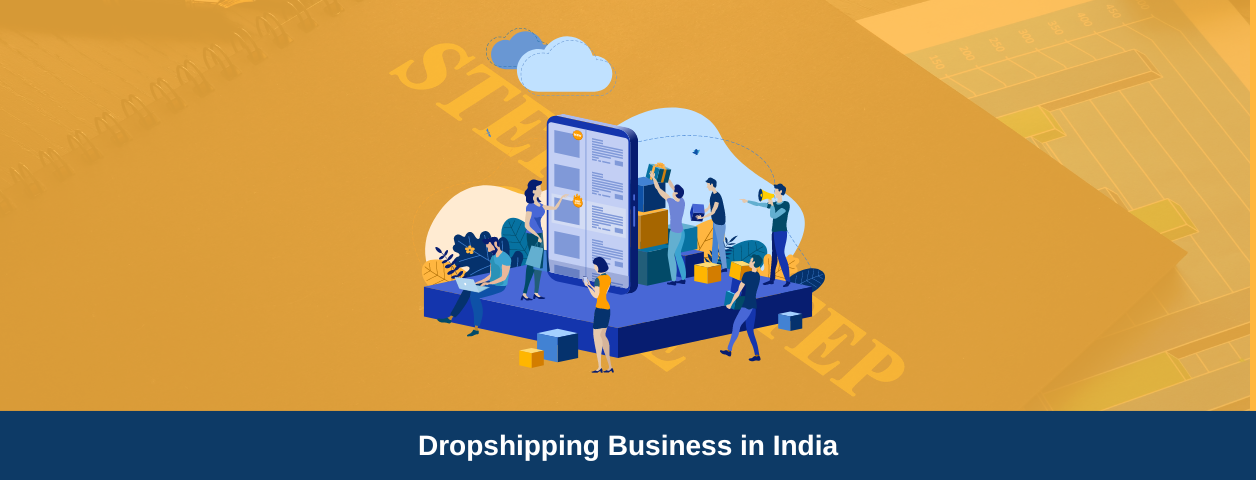Whether you’re starting a business or simply want to create unique designs for your custom t-shirts, this guide has you covered.
We’ve compiled a list of the best T-shirt design software options for 2025, catering to both free and paid preferences, beginner and professional levels.
This list offers something for everyone, from industry giants like Adobe Photoshop and Illustrator to user-friendly options like Canva and Inkscape.
We’ll examine each software’s pricing, features, pros, and cons, helping you choose the perfect tool to bring your T-shirt visions to life.
Bonus: We’ve also included expert tips and resources to guide you through the design process and even launch your T-shirt printing business.
Our favourite online t-shirt design tools and what they’re good for
According to our research, here’s a quick glimpse of the list of best t-shirt designing software in 2025.
Design Tool | Pricing | Suitable For |
Free + Advanced plan starts from ₹4000/12 months for one person | A popular freemium web-based tool, great for beginners and non-designers. | |
7 Days free trial + ₹733.96/mo incl. GST | A powerful all-rounder software that can help basic to very complex designs. | |
7 Days free trial + ₹733.96/mo incl. GST | Best for creating vector-based illustrations and design assets. | |
₹2,349.00 One-off payment | incl. Tax for Desktop apps | The best affordable alternative to both Photoshop and Illustrator. | |
Free | Best for beginner-friendly free open source where you also get community support | |
15 days Free Trial + subscription fees | It is best for professional vector illustration, layout, and photo editing. | |
Free | Best free photo editing software for beginners. | |
Free + Advanced plan starts from $1.99 /mo | Suitable for creating mockups. | |
Free | It produces icons, graphical design elements, and art for user interface components and mockups. | |
Free + Professional plan starts from $15/full seat/mo | It is used to create, share, and test designs for websites, mobile apps, and other digital products | |
Free + Advanced plan starts from ₹667 / month | Best for creating professional quality designs and mockups. | |
30 days Free Trial + $10 Monthly / per Editor | It’s best for vector-based design applications. | |
plans starting at $2999. | Suitable for online product designing. | |
₹ 1299 INR. Once | Best for creating sketches, Paintings, and illustrations. | |
Free + Paid plan starts from $3.99 Per Month | Suitable for creating vector graphics. |
Best T-Shirt Designing Software In 2025
Here is a detailed breakdown of each design software, including its price, type of application, reason for recommendation, and pros and cons.
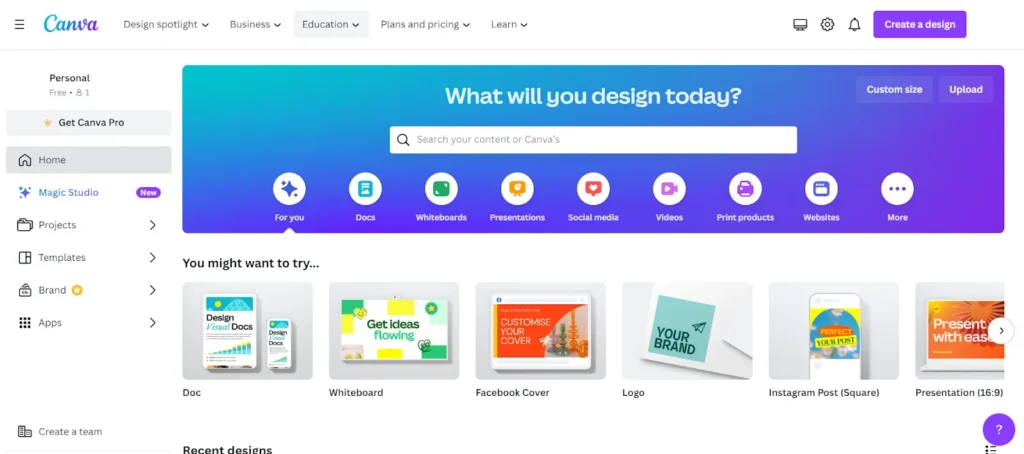
Price: Free + Advanced plan starts from ₹4000/12 months for one person
Type: Online cloud-based tool & mobile app
Key Features:
- Image Background Remover
- Free design templates
- Text to Image Converter
- Free online image enhancer
- Generate realistic images and art using AI
Most suitable for: creating visual content and social media posts, which is ideal for beginners and businesses.
Why we recommend it: Canva is the best tool because of its user-friendly interface, range of templates, and accessibility.
It allows beginners and professionals to create visuals without needing advanced design skills.
It offers an extensive library of fonts, images, and design elements.
With Their design templates, you can easily create graphic t-shirt designs.
Pros
- It is User-friendly,
- Great for creating social media graphics and basic mockups,
- It has a free plan available.
Cons
- It has limited customization compared to professional software,
- You have to deal with limited offline functionality in a free plan.
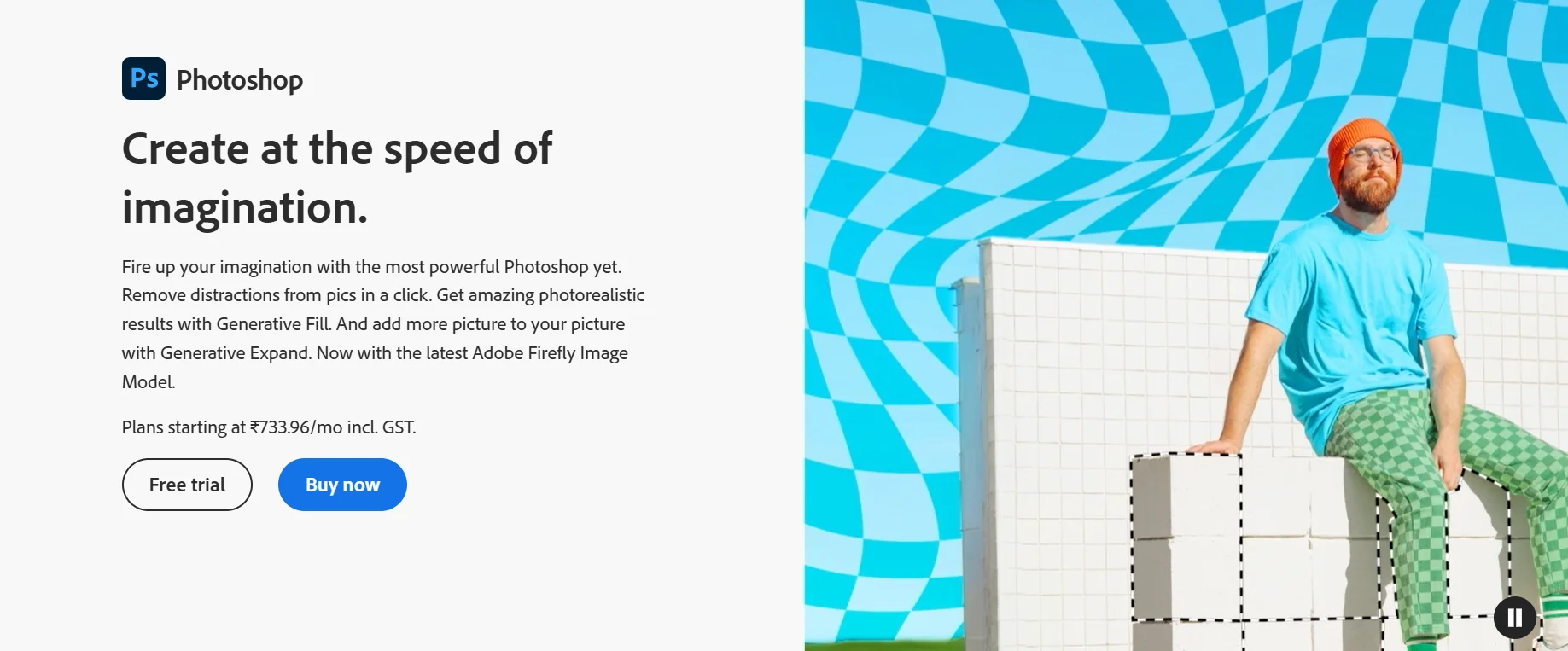
Price: 7 Days free trial + ₹733.96/mo incl. GST
Type: Application (desktop and iPad)
Key Features:
- Combine images using a layer mask
- Photo Retouching
- Selection tools
- Remove and Replace any background
- Modify color and tone
- Lighten parts of a photo
- Colour balance
Most suitable for: Professional designers, photographers, and artists.
Why we recommend it: We recommend Photoshop for its powerful design features and versatility.
It allows the creation of detailed designs, colours, and textures. It also supports high-resolution files, ensuring high-quality t-shirt designs.
Professionals widely use it to make graphic designs, making it a good choice for t-shirt design.
Pros:
- Extensive features,
- High-quality output,
- Non-destructive editing
Cons:
- Expensive subscription,
- Complex for beginners
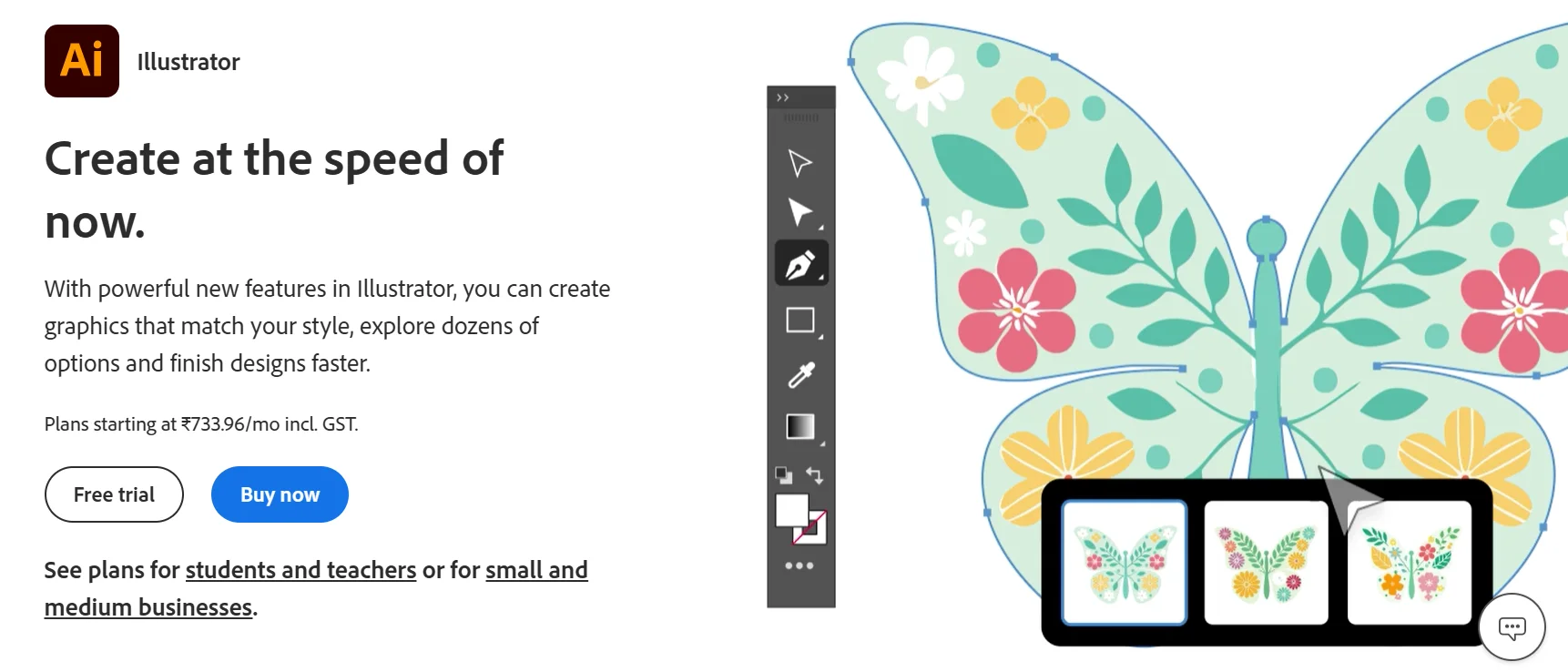
Price: 7 Days free trial + ₹733.96/mo incl. GST
Type: Application (desktop and iPad)
Key Features:
- Vectorize drawings with accuracy
- Make realistic mockups
- Create and Edit vector graphics
- Turn 3D designs into vector
- Fill shapes with detail and colour
- Generate patterns
- Create illustrations with text to vector graphics
- Customized letter creation
Most suitable for: Creating illustrations and artwork, Best for Graphic designers.
Why we recommend it: It’s best for creating vector graphics and detailed, professional T-shirt designs.
It offers advanced colour palettes for creating vibrant designs.
This software allows you to easily apply various effects such as gradients, shadows, and textures.
Pros
- Best vector-based software in the market,
- Scalable graphics
- Powerful drawing tools that can be used to design versatile pieces.
Cons
- The subscription can seem expensive,
- Has a steep learning curve.
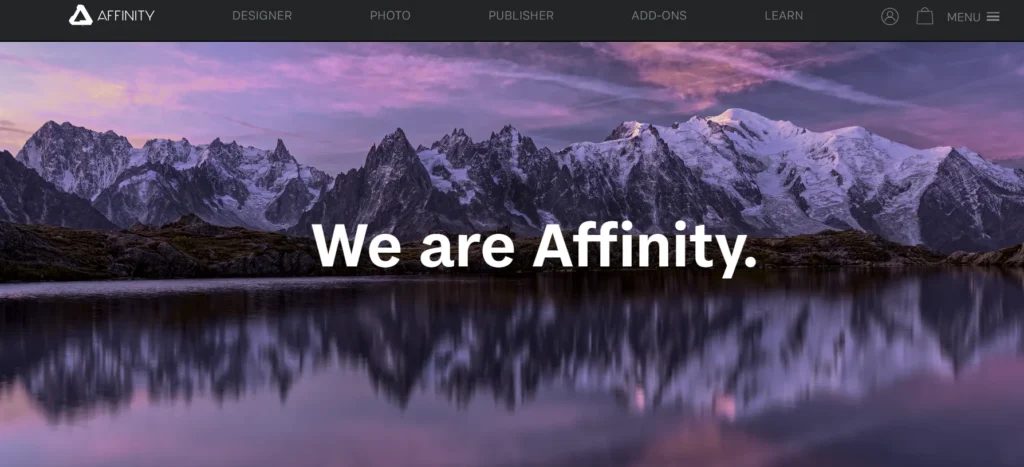
Price: ₹2,349.00 One-off payment | incl. Tax for Desktop apps
Type: Application (desktop and iPad)
Key Features:
- Fully featured vector and Raster workspace
- Hundreds of editing tools
- It achieves pixel-perfect designs
- Unlimited no of artboards
- Sophisticated typography options
- It works on windows, Mac or iPad
- Work with all major file types such as JPG, PNG, SVG and more.
Most suitable for: Budget-conscious designers, hobbyists, and vector graphics designers.
Why we recommend it: It offers vector editing flexibility to create detailed graphics for t-shirts. Unlike other software, it does not require subscription fees.
It is a one-time purchase with no recurring fees, making it affordable for freelance designers and small businesses.
The interface makes it easy for both beginners and designers to create t-shirt designs.
Pros
- Feature-rich application,
- It is good for technical illustration,
- It has a large user base and community support.
- The integrations are also good, making it easier to create projects that include raster and vector graphics.
- The UI is easier than Illustrator.
Cons
- Some complain about its low performance on Windows.
- The learning curve is as difficult as Adobe suits.
- Has fewer workspace options than Illustrator.
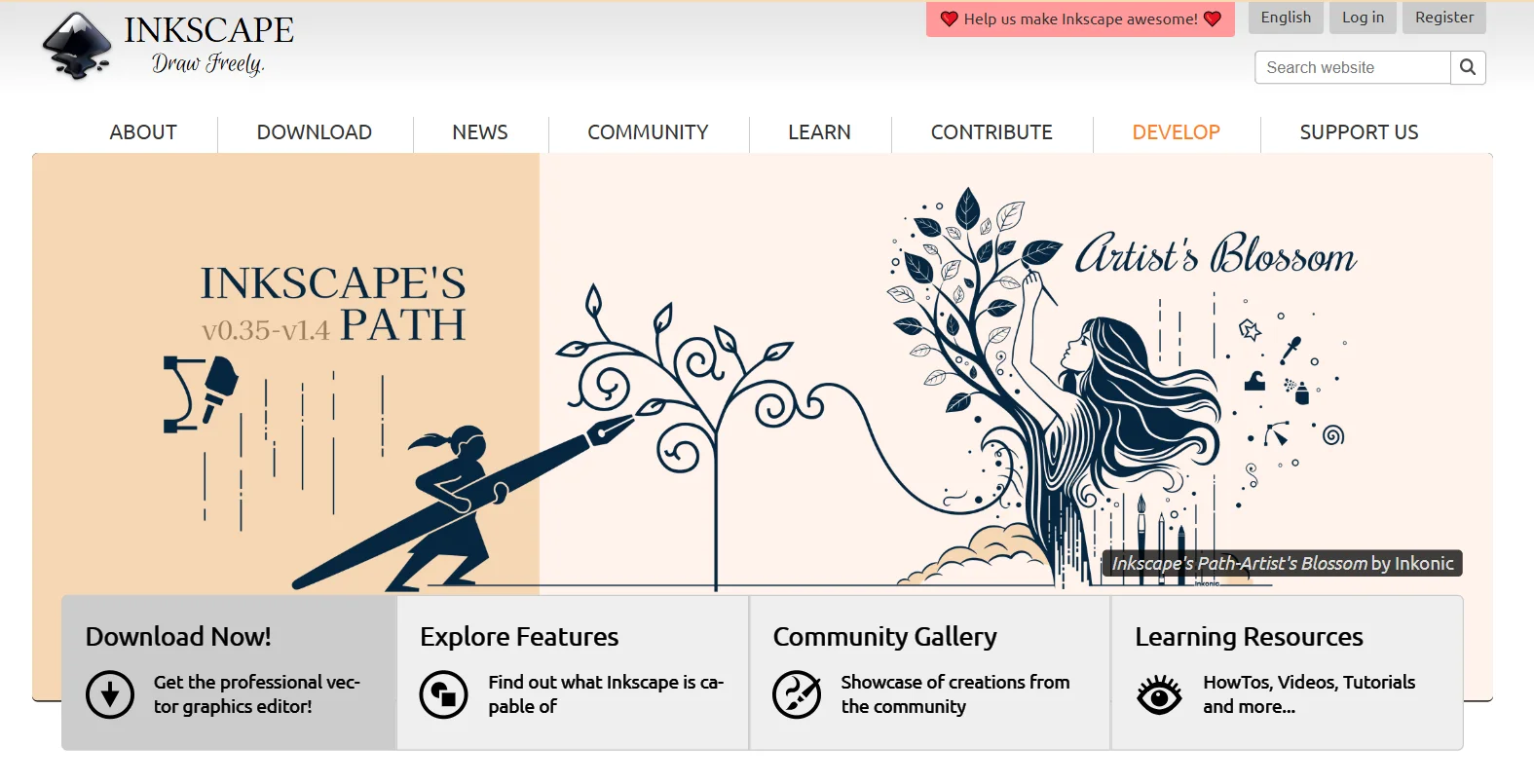
Price: Free
Type: Application
Key Features:
- Freehand drawing with simple paths
- Object Manipulation
- Predefined and custom colour palette
- Customize user interface
- More export and import file formats
- Customized templates
Most suitable for: Beginners, hobbyists, and budget-conscious users who need to make vector images.
Why we recommend it: It’s completely free and accessible for everyone, including small businesses and freelance designers.
It uses vector graphics, which ensures the t-shirt designs can be scaled to any size without losing quality.
It offers community support, which helps you find tutorials, resources, and plugins to improve your design process.
Pros
- It is free.
- It is open source so you can customise as you please.
- Inkscape is considered intuitive and allows novice users to create professional-looking images.
- Inkscape has an active community that uses and develops the software.
Cons
- It has limited features compared to paid software,
- It can be less intuitive.
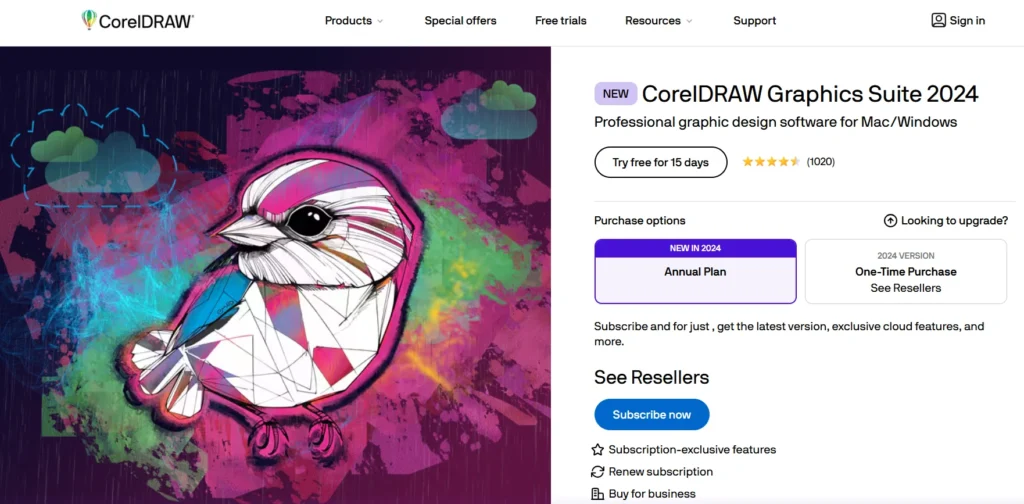
Price: 15 days Free Trial + subscription fees
Type: Online cloud-based & application.
Key Features:
- Vector illustration
- Photo Editing
- Customizable workspace
- Wide variety of templates
- Advanced colour management options
- Shape tools
- Supports multiple file formats
Most suitable for: Graphic designers, illustrators, web design, and technical illustrators.
Why we recommend it: It’s best for creating detailed vector illustrations. It’s widely used for creating brochures, posters, business cards, and flyers.
Because of its vector-editing capabilities, it is perfect for t-shirt design. It can also be used to convert bitmap images into general image objects.
Pros
- Feature-rich software,
- It is good for technical illustration,
- The software has a large user base.
Cons
- Expensive one-time purchase,
- Has a complex interface,
- It is not as widely used as Adobe software.
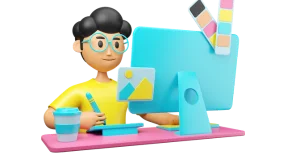
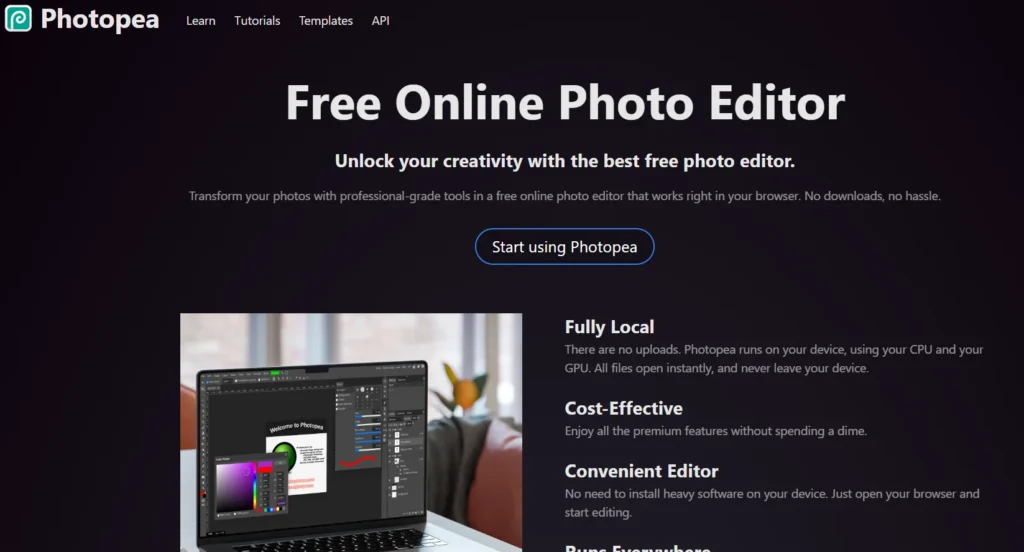
Price: Free
Type: Online cloud-based
Key Features:
- Professional editing tools
- It can open and export various file formats, including PSD.
- Advanced text editing tool
- Remove backgrounds
- They have Layers, Masks, Layer Styles, Smart Objects, Adjustment Layers, Channels, Paths and more.
- Create and Edit vector graphics directly within the editor.
Most suitable for: Photoshop users who are looking for a decent free alternative.
Why we recommend it: It’s completely free, and users can easily design high-quality designs.
It offers advanced editing features like layers, blending modes, masks, filters, and adjustment layers, giving users the flexibility to create detailed and high-quality t-shirt designs.
Pros
- It is free,
- It has a familiar interface for Photoshop users,
- It works in any browser.
Cons
- It is less powerful than Photoshop,
- It can be slow on low-end devices.
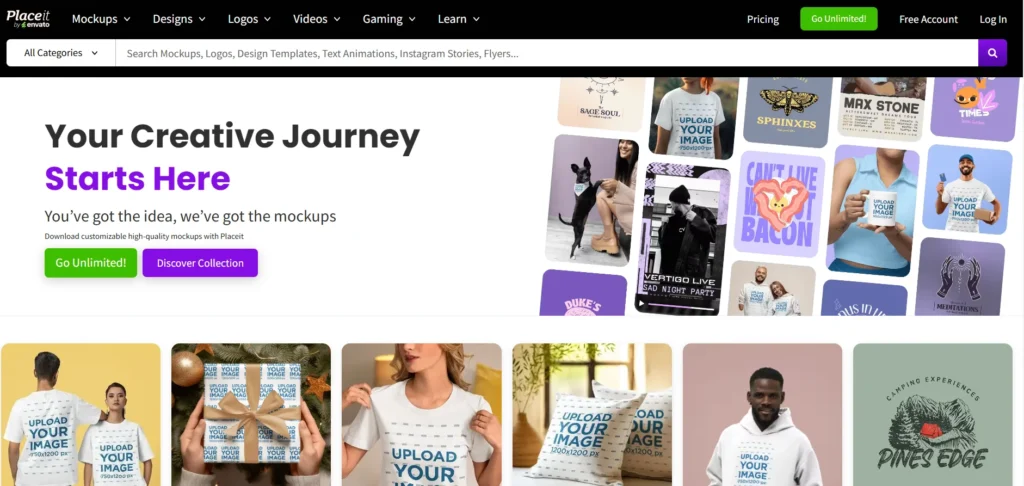
Price: Free + Advanced plan starts from $1.99 /mo (approx ₹ 169/ month)
Type: Online cloud-based
Key Features:
- Thousands of free templates
- Largest collection of mockups
- Free logo design creator
- Create your own gaming design
Most suitable for: Beginners, business owners/ designers who want to display their logos/ designs on different products.
Why we recommend it: It offers a wide range of pre-made t-shirt design templates, making it easy for users to create professional-looking designs quickly.
Also, You don’t need advanced design skills to get started. One of the standout features of Placeit is its vast library of realistic t-shirt mockups. You can instantly apply your designs to a variety of mockups.
Pros
- It has a wide variety of mockups and templates to use,
- The interface is easy to use.
Cons
- Subscription is required to access all features and high-resolution downloads.
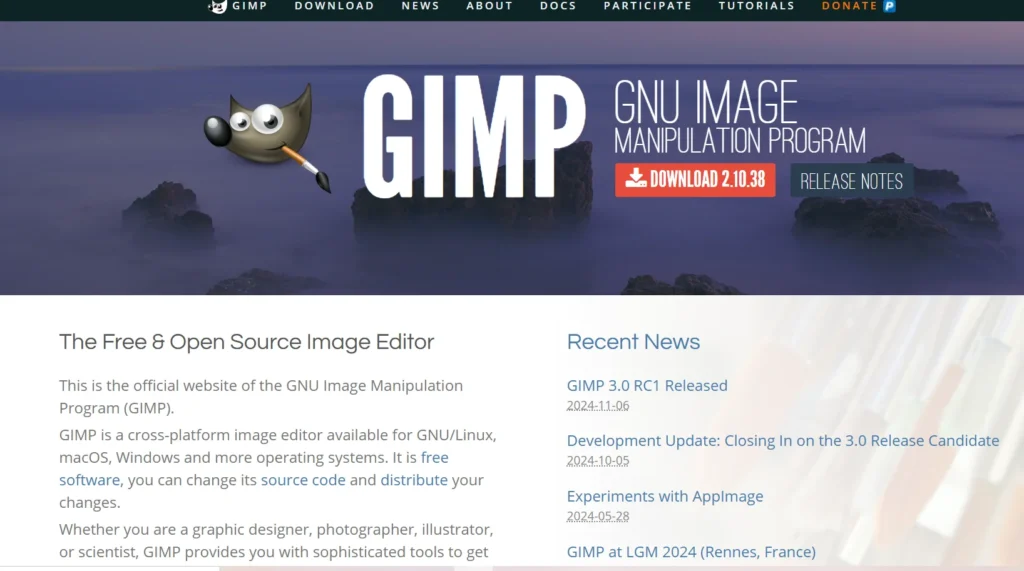
Price: Free
Type: Open source software
Key Features:
- Customizable interface
- Photo enhancement
- Advanced photo retouching techniques
- It supports Windows, Mac OS, Linux, and FreeBSD platforms
- It supports a range of file formats, including JPEG, GIF, PNG, TIFF and more
Most suitable for: Photo editors, illustrators, and budget-conscious users.
Why we recommend it: It’s free to use, which makes it the best choice for small businesses on a budget.
It offers editing tools that allow for detailed manipulation of images, including layers, masks, filters, and brushes.
It is good for creating custom artwork, detailed illustrations, and photo-based designs for t-shirts. It can handle raw files and vector images and even supports the CMYK colour range.
Pros
- The software is free.
- It is open source, so you can customise it as you wish.
- It has a variety of features that are beginner-friendly.
Cons
- The interface is not the most user-friendly and takes time to get accustomed to.
- To utilise it completely, you need to go through a steep learning curve.
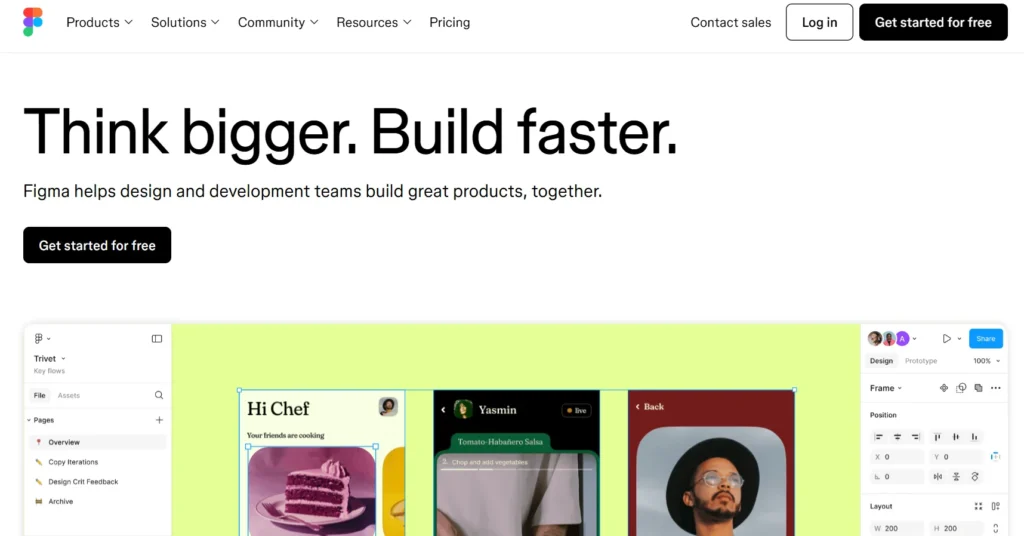
Price: Free + Professional plan starts from $15/full seat/mo(approx. ₹ 1272/ month)
Type: Online cloud-based
Key Features:
- Vector Graphics Editor
- Multiple team members can work on the same project
- Reusable styles
- Artboards and Frames
- Creates interactive mockups
Most suitable for: Collaborative designers, users on a budget.
Why we recommend it: Figma is great for teams. If you’re working with a design group or getting feedback from clients, Figma makes it easy to work together.
This is really helpful when you are improving t-shirt designs. It has a simple interface that is easy for both new and experienced designers to use.
Pros
- Has the feature of real-time collaboration,
- It is good for web and app design,
- You can avail of free plans for individual use.
Cons
- Limited photo editing features, hence not ideal for complex image manipulation.
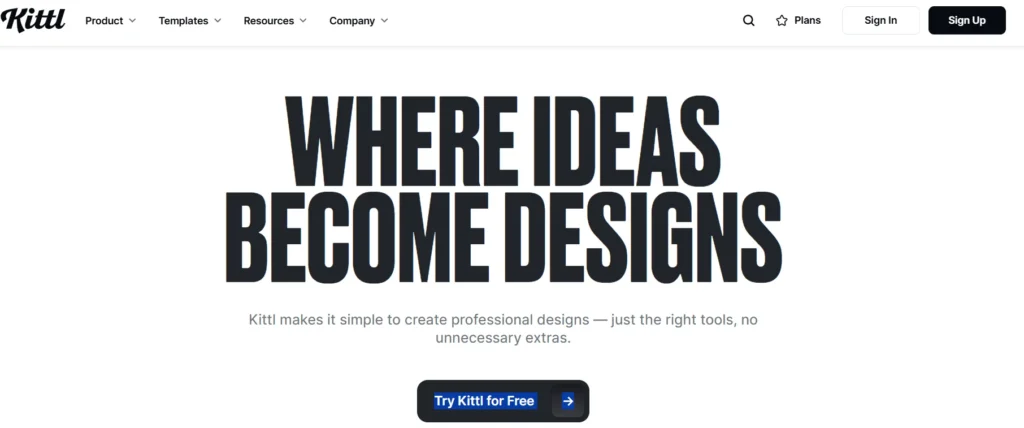
Price: Free + Advanced plan starts from ₹667/ month
Type: Cloud Based
Key Features:
- Easy drag-and-drop tools
- Exclusive fonts, templates and elements
- Full creative control
- Professional grade templates and mockups
- AI tools
Most suitable for: Creating T-shirt designs, Mockups, and vector images.
Why we recommend it: It’s easy to use with its drag-and-drop functions. Beginners and professionals should create t-shirt designs quickly.
It’s affordable and accessible, making it a great option for entrepreneurs and small business owners who need to create logos and product designs.
It has a library of pre-made templates, illustrations, fonts, and vector graphics.
Pros:
- It’s easy to use, even for beginners.
- It offers an extensive library of pre-made templates, icons, fonts, and other design elements.
- It is very cost-effective compared to other professional design software
- It offers the ability to generate t-shirt mockups directly within the platform.
Cons:
- The free version comes with limited resources.
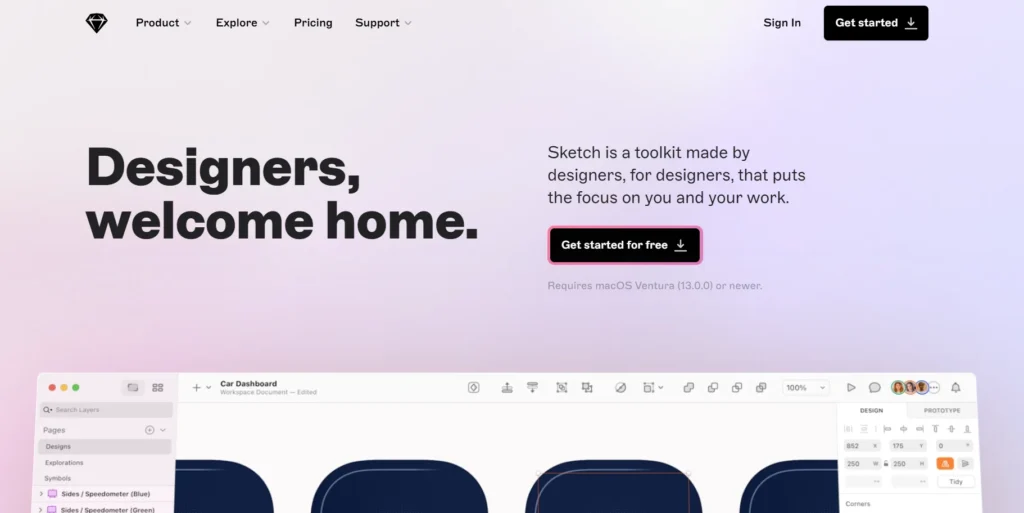
Price: 30 days Free Trial + $10 Monthly / per Editor ( (approx. ₹ 848/ month)
Type: Mac OS
- Creates vector-based shapes
- Full layer styling
- Advanced text editing tools
- Bitmap image support
- Image adjustments tools
- Advanced Editing controls
Most suitable for: Creating vector-based designs.
Why we recommend it: This is ideal for t-shirt designs because vector graphics are perfect for print, ensuring your designs look sharp and clear at any size.
It offers advanced text tools that allow you to customize fonts and typography in detail.
It will enable you to work with multiple artboards in one project, making it easy to design several t-shirt graphics simultaneously.
Pros:
- Sketch has a simple interface, making it easy for beginners and experienced designers to get started.
- It also allows real-time collaboration through cloud features, making it easier for design teams or clients to collaborate.
Cons:
- No Windows versions are available. Mac Users only can access it.
- Limited Print-Specific Features
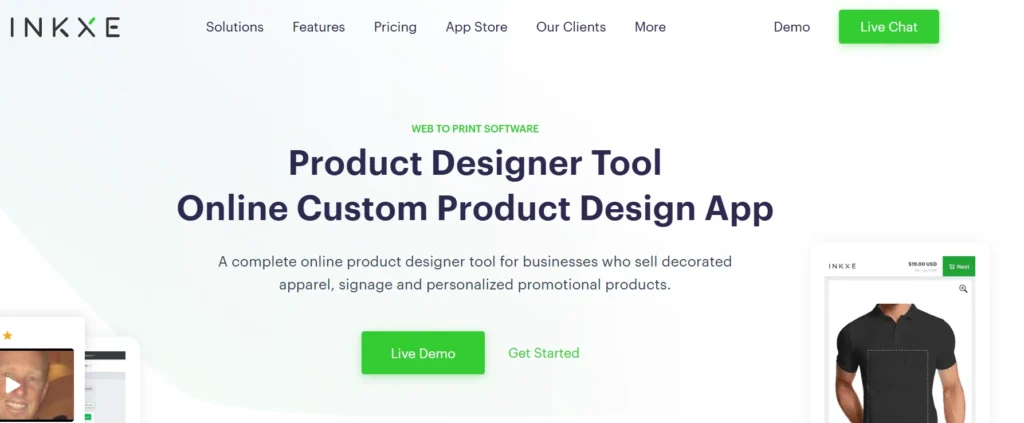
Price: Plans start at $2999. (approx. ₹ 2,54,343)
Type: Web Based
Key Features:
- Customizable design templates
- Vector and Raster file support
- Advanced text effects
- Multiple image upload formats
- Unlimited templates and vector clipart
- AI background remover
Most suitable for: Creating custom product designs.
Why we recommend it: Its simple drag-and-drop interface makes it accessible to both beginners and experienced designers.
You don’t need advanced design skills to create professional-looking t-shirt designs. It offers a wide range of pre-made templates, making it easy to get started.
Pros:
- The platform ensures that your designs are print-ready for various printing methods.
- It generates realistic mockups, allowing you to preview how your design will look on a t-shirt.
Cons:
- High cost compared to other software.
- It lacks some advanced design tools and customization options found in more professional platforms like Adobe Illustrator or CorelDRAW.
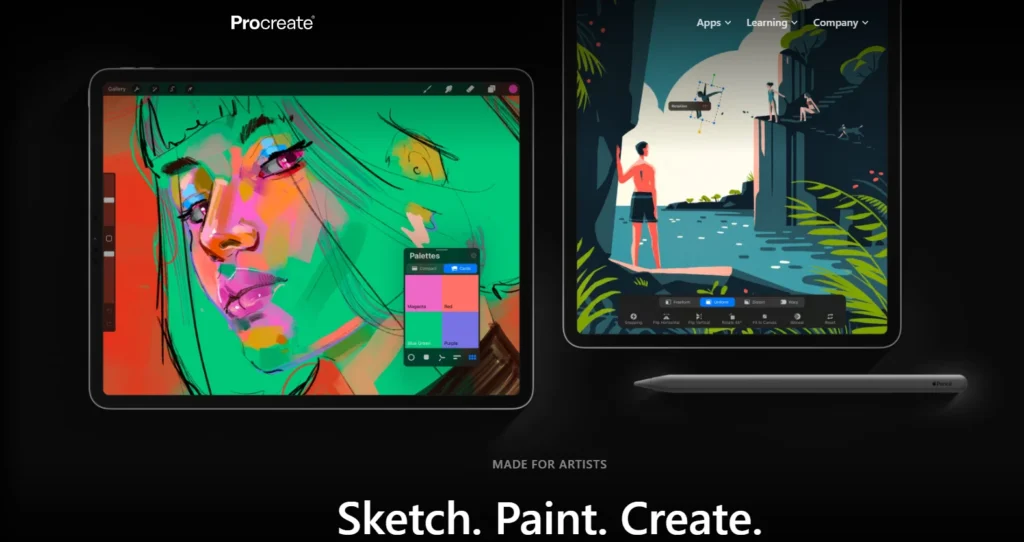
Price: Plans start at ₹1299 INR. Once exclusively from the Apple store.
Type: App made for iPad
Key Features:
- It has 200 handcrafted brushes like pencils and inks
- Complete colour control over designing
- It offers industry-leading features like drawing assist
- Digital effects
Most suitable for: Creating fast paint, expressive sketching, and paintings.
Why we recommend it: Its advanced brush engine allows you to create detailed, custom artwork.
It offers a variety of brushes, pens, and textures, ideal for hand-drawn illustrations, logos, and unique t-shirt designs.
It has a user-friendly interface with an intuitive design that’s easy to navigate, even for beginners.
Pros:
- No subscription fees are charged.
- It has a library of brushes, from pencils, inks, and charcoals to artistic brushes.
- It gives complete colour control.
Cons:
- It’s available only for iPad and iPhone.
- It gives low-image quality.

Price: Free + Paid plan starts from $3.99 Per Month (approx. ₹ 339/ month)
Type: Web-based application
Key Features:
- Background remover
- Premium image generator
- AI vector generator
- SVG editor
- Raster to vector conversion
- Generative AI tools
- Easy-to-learn interface
Most suitable for: Creating vector graphics, logos, and icons.
Why we recommend it: It’s best for creating clean, scalable, and professional-looking t-shirt graphics.
Vectr is free, making it an excellent option for new designers or small businesses with limited budgets.
It offers real-time collaboration, so if you’re working on a t-shirt design project with a team.
Pros:
- It offers excellent features, including real-time collaboration, generative AI tools, and seamless cross-platform syncing. Users can easily create, edit, and share vector graphics without a steep learning curve.
- You can create scalable images without quality loss.
Cons:
- Less T-shirt design template compared to other software tools.
- Limited advanced features.
- An internet connection is required to access the app
Expert tips from our team on t-shirt designing ideas
Here, we share our team of experts actionable tips on designing t-shirt ideas that you can consider while designing t-shirts.
1. Know Your Audience:
Finding your target audience’s preferences is important in designing t-shirts. Research popular trends that align with your target audience.
Currently, anime designs are in demand among Gen Z, so you should know your audience’s interests before starting to design.
Tip:
- You can use tools like Google Trends to find and compare what people are interested in.
- To understand better, see what similar businesses are offering. Analyse their designs, identify gaps, and find ways to differentiate yourself.
2. Embrace Simplicity
Complex designs can sometimes be complicated to print, so focusing on simple, clear visuals with strong messages is better.
Tip:
- Use easy-to-read fonts and minimalistic graphics to create designs that stand out from the competition.
3. Play with Typography
Typography is an excellent way to create unique designs. Experiment with different font styles to create unique designs.
Tip:
- You can add simple graphics with text for added impact.
- Choose the right typography to transform your simple design into a visually striking one.
- Use font paring to determine which one provides a good contrast. For example, you can combine serif and sans-serif fonts.
- Try to use at least 2-3 fonts in your design.
4. Use High-quality Graphics ONLY
When designing a T-shirt, use high-quality graphics for better print results. Low-resolution graphics can appear blurry and ruin the overall appearance.
Tip:
- Try to use at least 300 DPI resolution to ensure the design looks clear, as high-quality prints give a premium feel.
- Use a high-quality design that aligns with overall style and colour.
- Use vector graphics to create scalable images.
5. Don't Forget the Back!
When designing a T-shirt’s back, it must grab attention. The back is a good place for placing design elements such as logos, quotes, and graphics.
Tip:
- If your t-shirt has a small logo or graphic on the front, you can enlarge the same design on the back.
- Include quotes and slogans that complement the overall t-shirt theme. The back gives you more space, so experiment with how the design is aligned. Center it, offset it to one side or place it along the upper or lower back for a unique look.
- Keep the same colour palette, style, and tone to maintain visual interest throughout the t-shirt.
Recommended Guide:
👉Check out our 51 Trendy T-shirt Design Ideas blog to explore more T-shirt designs with real examples.
Upload Your T-Shirt Design - Order for yourself or Sell Online.
Here, we share quick and easy steps to upload your t-shirt designs, which you can then order for yourself or sell online with Qikink
Step 1: Create an account with Qikink and log in to the dashboard.
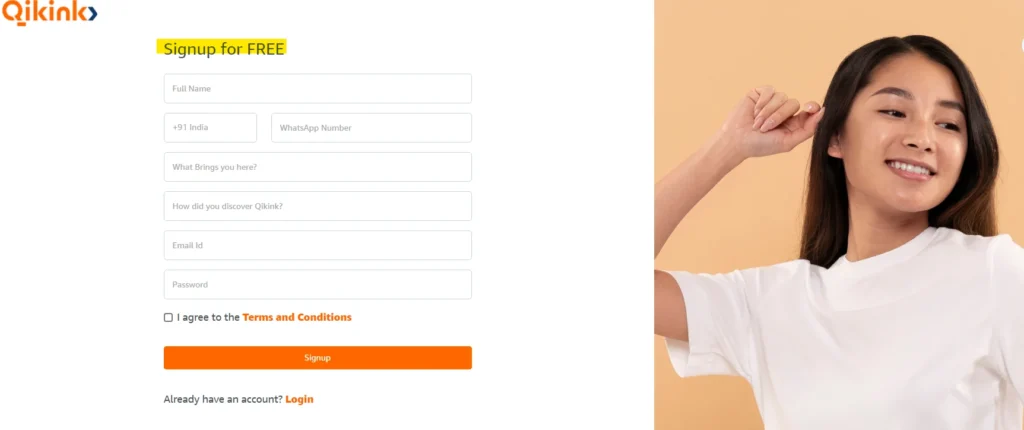
Step 2: Create products using your custom t-shirt design at the Qikink dashboard. Here are the exact steps:
Go to the “Products” tab > “Add products” and select the product on which you want to print your design.
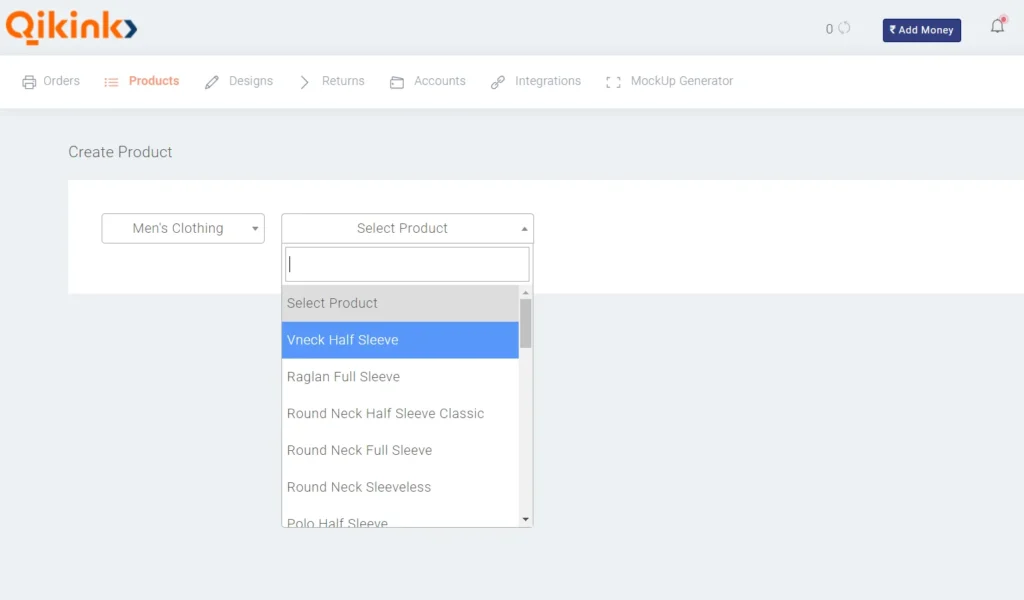
Step 3: Select the product specifications, like T-shirt colour, size, and order quantity. Then, click the “Add design” button to upload your designs.
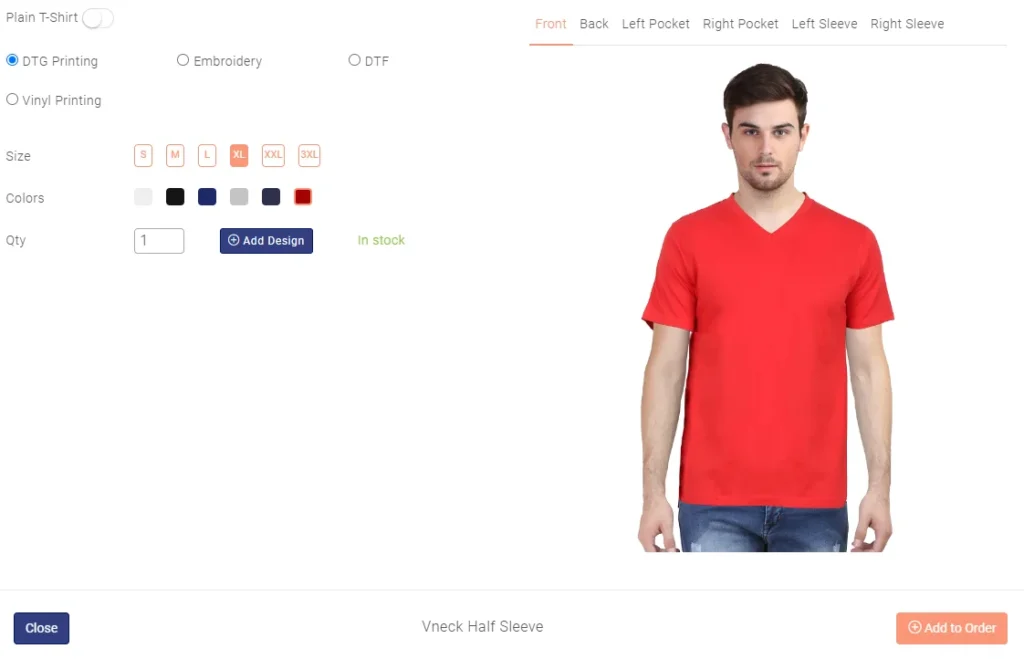
Step 4: Once done uploading and selecting every detail, click on the “Add to order” button to save product.
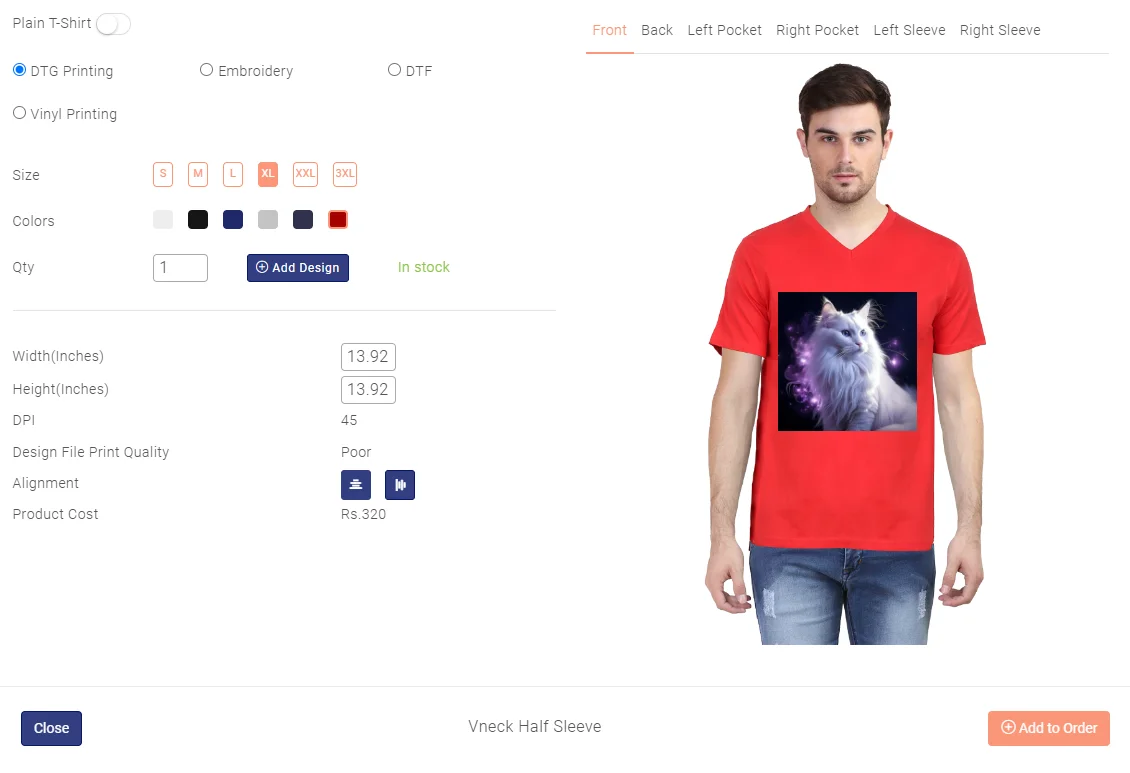
Step 5: Once done uploading and selecting every detail, fill in your order details, including the Order Reference Number, Shipping Type, and any comments.
Step 6: Complete the shipping details by entering the Payment Mode and Delivery Pincode and selecting the Courier Carrier.
Click on the “Save order” button. Your order has been successfully placed.
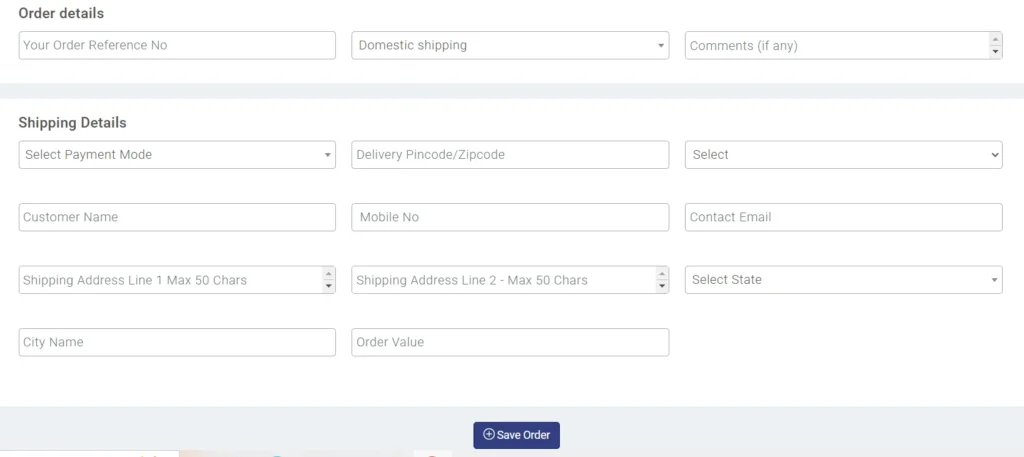
Step 7: You can now find your designed product in the Products tab’s “My product” section.

Step 8: To sell online, Go to the “Integrations” tab and set up your e-commerce storefront to sell these products. Connect your Shopify, Woocommerce, or any other store using our custom-built Plugins or open APIs.
👉Check out this guide for detailed steps
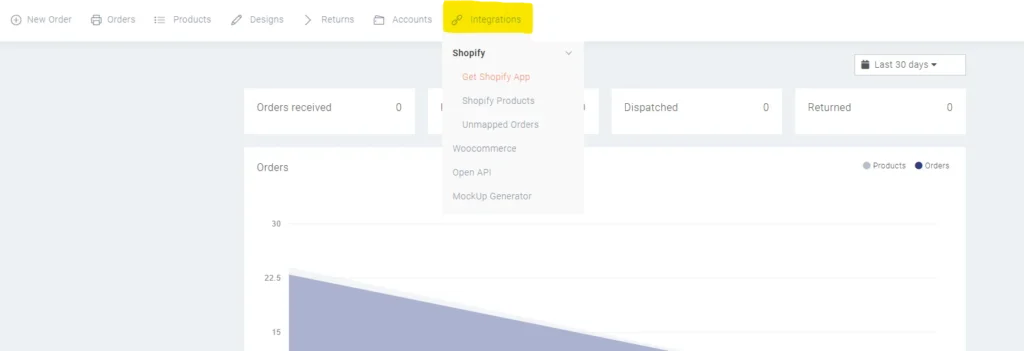
Step 8: Next, update your online store with T-shirt products created in the Qikink dashboard. Launch the filled store for your audience.
Step 9: Promote your store using marketing strategies to increase sales and brand awareness. Use social media platforms like Instagram and Facebook to improve brand visibility.
Step 10: Check the orders the customer placed. Once you receive your orders, they will automatically reflected on the Qikink Dashboard.
You can check the customer details and click the Push To Live button to confirm the order.
👉 If you need help in starting your tshirt printing business, contact our experts and get custom tshirt printing services.
Related resources to start your t-shirt clothing business:
Conclusion
Choosing the right t-shirt design software is essential in bringing your creative design ideas to life. The tools we shared in this guide offer unique features that suit various needs.
Free tools like Canva and GIMP are excellent for beginners. While paid software like Adobe Illustrator, Photoshop and CorelDRAW offers advanced features for more experienced designers.
Choose the best option based on your skill level and business requirements.
With the right software, you can create stunning t-shirt designs that stand out in a competitive market, taking your brand to the next level in 2025.
Read More
Frequently Asked Questions
Is Canva good for designing t-shirts?
Yes, Canva can be a good t-shirt designing tool if your design aesthetics are simple and minimalistic. With practice, you can create simple vector designs, but for complex designs or illustrations, it won’t work well.
Which printing is best for t-shirts?
DTG printing is considered ideal for t-shirt printing. With DTG printing, you can get vibrant designs on small orders. They can last anywhere from 25% to 50% as long as the screen prints.
How are professional t-shirts printed?
Professional t-shirts are usually printed through the screen printing process. But it is not ideal for small businesses as you need to buy the entire machine, pigments, and equipment, plus you need to master the printing technique.
Where do I print my custom t-shirt designs?
You can print your custom t-shirt designs hassle-free from POD websites like Qikink.com.
